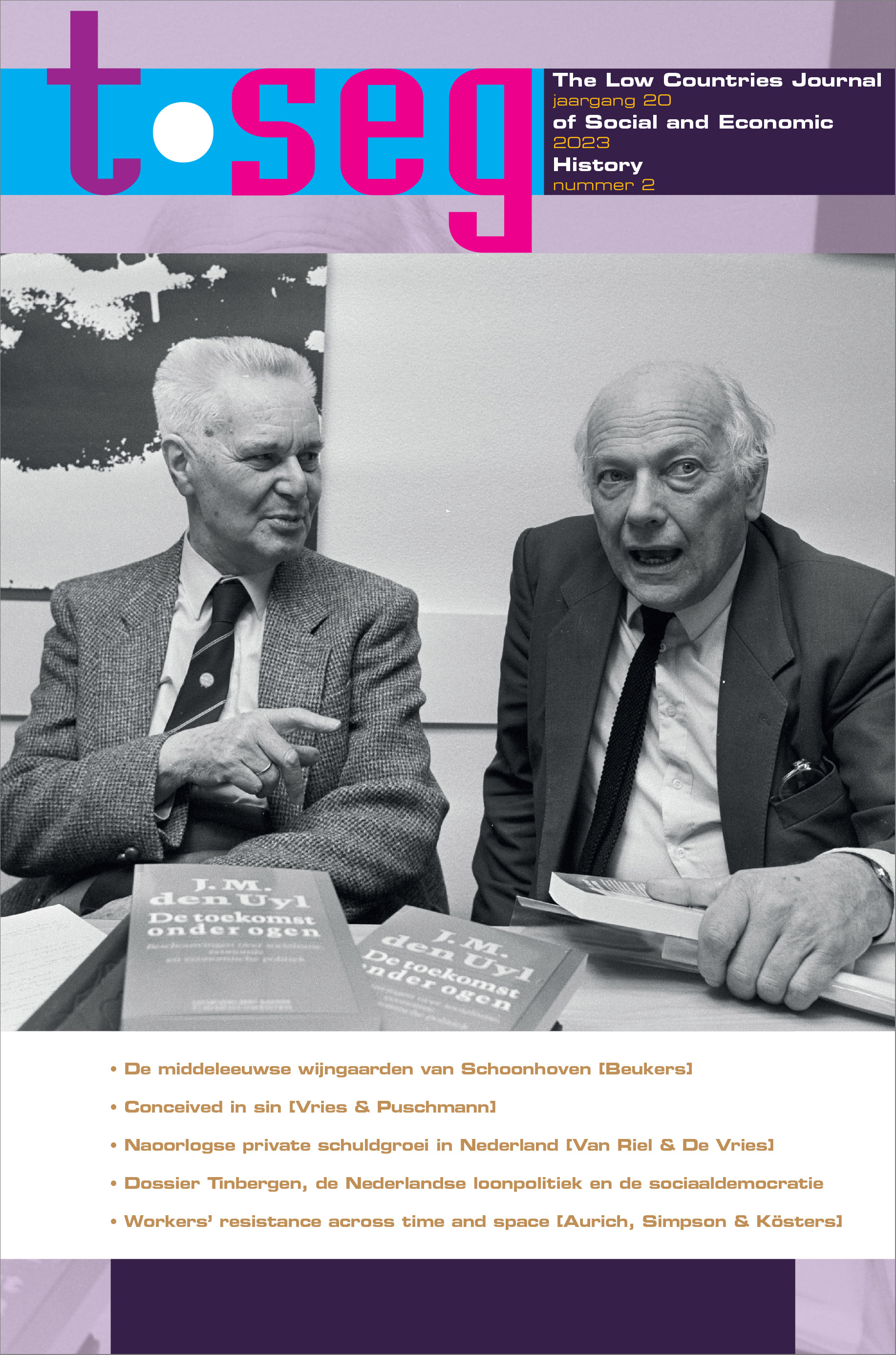Conceived in Sin
Out-of-Wedlock Fertility and Bridal Pregnancies in the Antwerp District, Belgium, c. 1820-1920
DOI:
https://doi.org/10.52024/tseg.11453Keywords:
illegitimacy, out of wedlock fertility, bridal pregancies, AntwerpAbstract
This article explores the causes of the rise in extra-marital fertility in the Antwerp district between 1820 and 1920. The Antwerp COR*-database is used to compare the reproductive life courses and characteristics of unmarried mothers, women who experienced bridal pregnancies, as well as women who conceived exclusively within marriage. The authors conclude that illegitimacy was mainly a phenomenon among young urban working class women, and that it was predominantly a consequence of vulnerability. The rise of illegitimacy should be viewed against Antwerp’s transition from a regional textile centre into a major port city, which increased migration and negatively influenced women’s employment opportunities. The effects of illegitimacy were not as disastrous as the literature suggests, however, given the fact that a high percentage of the affected women eventually married.
Downloads
Published
Issue
Section
License
Copyright (c) 2023 Paul Puschmann, Sophie Vries

This work is licensed under a Creative Commons Attribution 4.0 International License.






